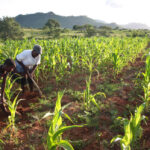Kenya’s working population is the heartbeat of its economy, driving industries from agriculture to tech and everything in between. In 2022, the country boasted around 20 million workers, with Nairobi, Kiambu, and Nakuru leading the pack. Fast forward to 2025, and this workforce distribution offers a goldmine of insights for Kenyan business professionals. Whether you’re an entrepreneur, investor, or policymaker, understanding where workers thrive—and where they don’t—can shape your next big move.
This article dives deep into the latest county-level workforce data, spotlighting opportunities, challenges, and trends. Optimized for high-ranking keywords like “Kenya workforce 2025,” “top working counties in Kenya,” and “employment opportunities by county,” it’s your roadmap to tapping into the nation’s human capital. Let’s explore the numbers, unpack their meaning, and turn data into action.
Why Kenya’s Workforce Matters to Businesses
Kenya’s 20 million-strong workforce in 2022 reflects a vibrant, growing economy—projected to hit 22 million by 2025, per World Bank estimates, thanks to a youthful population (over 75% under 35). Workers fuel key sectors: agriculture (33% of GDP), manufacturing (7.5%), and services (54%). For businesses, this isn’t just a statistic—it’s a talent pool, a consumer base, and a driver of demand.
From Nairobi’s bustling urban hubs to Turkana’s untapped potential, county-level workforce data reveals where labor is concentrated and where it’s scarce. This guide breaks it all down, offering fresh insights for hiring, expansion, and investment.
Top Working Counties in Kenya: The Powerhouses
Let’s kick off with the counties boasting the highest worker populations. These are Kenya’s economic engines, humming with activity.
1. Nairobi – 2,191,913 Workers
- Why It Leads: As Kenya’s capital and commercial hub, Nairobi draws talent with jobs in tech, finance, and trade. It’s home to over 70% of the country’s formal sector jobs.
- Business Angle: With 2.19 million workers, it’s a hotspot for recruitment, retail, and service-based ventures.
2. Kiambu – 1,285,151 Workers
- The Suburban Giant: Proximity to Nairobi, fertile lands, and thriving SMEs make Kiambu a worker magnet.
- Opportunity: Agribusiness and manufacturing firms can tap into its skilled and semi-skilled labor.
3. Nakuru – 947,626 Workers
- Rift Valley Star: Nakuru’s mix of agriculture, tourism, and industry fuels its workforce.
- Insight: Logistics and hospitality businesses thrive here, supported by a growing labor pool.
4. Meru – 771,570 Workers
- Central Powerhouse: Meru’s agricultural base (think tea and miraa) and trading hubs drive employment.
- Tip: Retail and agro-processing ventures can leverage its workforce.
5. Kakamega – 727,720 Workers
- Western Anchor: Small-scale farming and informal trade keep Kakamega buzzing.
- Market Potential: Affordable labor makes it ideal for labor-intensive industries.
These top five account for over 5.9 million workers—nearly 30% of Kenya’s total—highlighting urban and peri-urban dominance. For businesses, these counties are prime targets for scaling operations or launching new ventures.
Mid-Tier Counties: The Steady Performers
Next up, the mid-tier counties—ranging from 200,000 to 700,000 workers—offer stability and growth potential. Here’s a snapshot:
- Machakos (643,537): A manufacturing and farming hub near Nairobi.
- Murang’a (620,340): Agriculture and SMEs drive its workforce.
- Kisii (597,082): Dense population and trade fuel jobs.
- Bungoma (583,237): Western Kenya’s labor leader, tied to farming.
- Kajiado (563,485): Tourism and real estate boost employment.
- Kilifi (557,808): Coastal tourism and fishing sustain workers.
- Kisumu (517,559): Lake Victoria’s trade and transport hub.
- Mombasa (515,639): Port city with logistics and tourism jobs.
- Migori (484,898): Gold mining and farming create opportunities.
- Makueni (477,877): Resilient agriculture supports its workforce.
- Uasin Gishu (468,605): Breadbasket county with agro-based jobs.
- Nyeri (456,293): Central Kenya’s coffee and trade center.
- Homa Bay (456,014): Fishing and farming anchor its economy.
- Narok (429,887): Tourism (Maasai Mara) and maize farming.
- Siaya (412,228): Nyanza’s steady contributor.
- Nandi (408,721): Agriculture and small-scale trade.
- Busia (396,706): Cross-border trade with Uganda.
- Bomet (389,097): Tea and maize farming.
- Kitui (387,930): Arid resilience with farming and trade.
- Kericho (378,611): Tea industry powerhouse.
- Kirinyaga (358,533): Rice and horticulture hub.
- Embu (347,372): Farming and informal jobs.
- Nyandarua (343,754): Potatoes and dairy farming.
- Baringo (297,846): Livestock and tourism.
- Kwale (284,539): Coastal agriculture and mining.
- Nyamira (259,664): Dense population with farming jobs.
- Vihiga (257,750): Smallholder farming hub.
- Trans Nzoia (251,587): Maize production leader.
- Laikipia (248,307): Ranching and tourism.
- Tharaka-Nithi (232,060): Agriculture and trade.
These counties balance urban and rural dynamics, offering businesses a mix of skilled and affordable labor for diverse industries.
Low-Worker Counties: Hidden Gems
At the lower end, counties with fewer than 200,000 workers face challenges but also signal untapped potential:
- West Pokot (211,119): Pastoralism dominates, with farming potential.
- Elgeyo-Marakwet (197,842): Athletics and small-scale farming.
- Turkana (178,209): Oil and fishing opportunities emerging.
- Taita Taveta (154,240): Mining and tourism.
- Garissa (148,326): Livestock trade in arid lands.
- Wajir (142,927): Pastoral economy with growth scope.
- Mandera (108,402): Cross-border trade potential.
- Marsabit (98,210): Arid challenges, but renewable energy jobs rising.
- Tana River (72,518): Fishing and irrigation potential.
- Isiolo (48,292): Strategic location for trade.
- Lamu (44,926): Tourism and port development.
- Samburu (43,428): Tourism and pastoralism.
These counties lag due to aridity, low urbanization, or infrastructure gaps, but they’re ripe for innovation—think renewable energy in Marsabit or tourism in Lamu.
Regional Workforce Trends
Breaking it down by region:
- Nairobi (2.19M): Urban giant, 11% of total workers.
- Central (3.64M): Kiambu, Murang’a, Nyeri, and Meru lead.
- Rift Valley (3.58M): Nakuru, Uasin Gishu, and Narok shine.
- Eastern (2.09M): Machakos, Makueni, and Kitui stand out.
- Western (2.22M): Kakamega, Bungoma, and Busia dominate.
- Nyanza (2.17M): Kisii, Kisumu, and Migori anchor it.
- Coast (1.60M): Mombasa, Kilifi, and Kwale lead.
- North Eastern/ASAL (<650K): Garissa, Wajir, and Mandera trail.
Urban centers and fertile regions dominate, while ASALs struggle—but growth is possible with targeted investment.
What Drives Workforce Distribution?
Several factors shape these numbers:
- Urbanization: Nairobi and Mombasa thrive as job magnets.
- Agriculture: Counties like Nakuru and Uasin Gishu rely on farming jobs.
- Education: Higher literacy in Kiambu (92%) and Nyeri (89%) boosts employability.
- Infrastructure: Roads and ports in Mombasa and Kisumu attract workers.
- Industry Mix: Tourism in Kilifi, mining in Migori, and tea in Kericho diversify employment.
For businesses, these drivers point to strategic hiring and expansion zones.
Economic Impact: Workers as Wealth Creators
Kenya’s workforce generated Ksh 13.2 trillion in GDP in 2022, with per-worker productivity averaging Ksh 660,000 annually. Top counties like Nairobi (Ksh 1.2M/worker) far outpace Samburu (Ksh 250K/worker), reflecting income disparities. By 2025, with wage growth and tech adoption, this could rise 10-15%.
- Jobs: Formal employment (5.5M) and informal (14.5M) fuel livelihoods.
- Consumer Power: Workers drive demand for goods and services.
- Tax Revenue: PAYE and VAT from workers fund public projects.
Businesses can harness this by targeting high-worker counties for retail or services.
Challenges Facing Kenya’s Workforce
Growth isn’t without hurdles:
- Unemployment: 5.7% national rate (2022), higher in urban areas (7.5%).
- Skills Mismatch: Tech jobs grow, but training lags.
- Informal Dominance: 83% of jobs lack benefits or stability.
- ASAL Struggles: Low education and infrastructure limit workers.
These gaps are your chance to innovate—think skills academies or remote work solutions.
Opportunities for Businesses in 2025
Ready to tap in? Here’s how:
- Hire in Nairobi/Kiambu: Access skilled talent for tech and finance.
- Expand to Nakuru: Affordable labor for manufacturing and tourism.
- Train in ASALs: Upskill workers in Turkana or Mandera for emerging sectors.
- Retail in Mid-Tiers: Target Kisumu and Machakos for consumer goods.
- Tech Solutions: Remote work platforms for rural counties.
The workforce is your asset—use it wisely.
Future Trends: Workforce 2030
By 2030, Kenya’s workforce could hit 25 million, driven by:
- Tech Boom: Digital jobs in Nairobi and Kisumu.
- Green Jobs: Renewable energy in Marsabit and Turkana.
- Policy Push: Vision 2030 targets 1M new jobs annually.
Businesses aligning with these trends will thrive.





